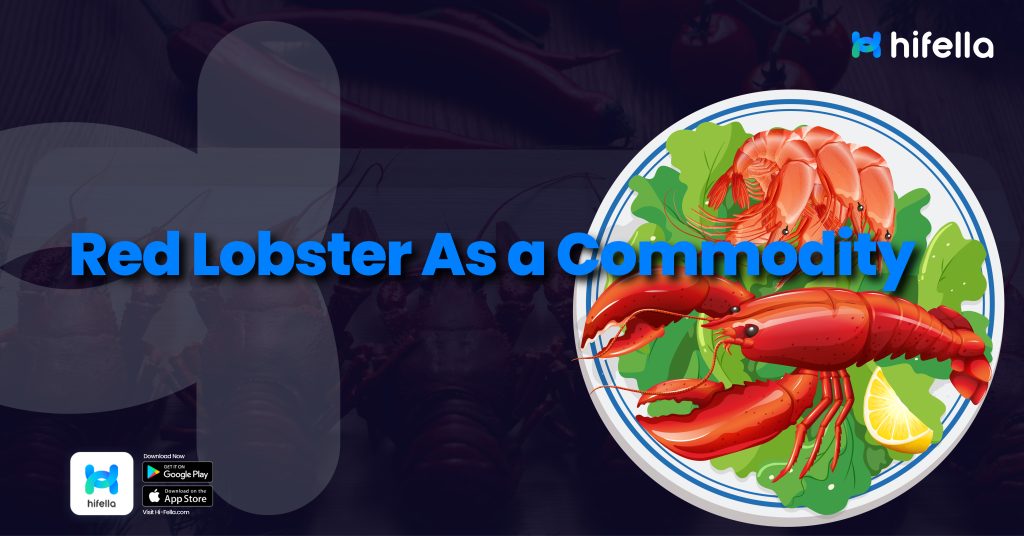Is Red Lobster going out of business? This question has come up for customers, investors, and people in the restaurant industry as the seafood chain faces financial challenges and changing dining trends.
Famous for its popular dishes, Red Lobster has encountered difficulties like shifts in customer preferences, more competition, and the lasting effects of the pandemic. In this article, we’ll look at Red Lobster’s financial situation, its plans to stay competitive, and what might be in store for this well-loved brand.
Red Lobster’s Business Overview and History

Source: The Florida Times-Union
Red Lobster began in 1968 as a small seafood restaurant in Lakeland, Florida, founded by Bill Darden. His goal was simple: to make delicious, affordable seafood available to everyone. The restaurant quickly became popular and grew into a well-known chain across the U.S., famous for dishes like Cheddar Bay Biscuits, lobster, and shrimp.
Over the years, Red Lobster changed ownership several times. First, it was owned by General Mills, then became part of Darden Restaurants, and in 2014, it was sold to Golden Gate Capital, a private equity firm, to help it grow independently.
Today, Red Lobster is one of the largest seafood chains in the world. The company has faced some challenges, like adapting to new dining trends and changes in what customers want. But despite these hurdles, Red Lobster continues to be a popular brand, working hard to keep its place in the seafood restaurant industry.
Is Red Lobster Going Out of Business? Challenges Facing Red Lobster
Red Lobster has encountered several challenges in recent years that impact its position in the casual dining industry:
1. Financial Performance
Red Lobster’s financial health has been affected by rising costs for ingredients, labor, and operating expenses. In recent years, the company has faced financial pressure due to shifts in the dining industry, affecting profitability.

Source: Technomic, Restaurant Business
In Q3 2023, Red Lobster reported a net loss of $11 million, mainly due to the costs of its popular “Endless Shrimp” deal. By the end of 2023, total losses had climbed to over $22 million as the chain continued to face low customer visits and higher costs.
Over the last financial year, Red Lobster lost $76 million, with operating earnings dropping by 60%.
Annual sales have been mostly flat since the company was sold to a private equity firm in 2014, except for a major drop in 2020 due to COVID-19, which the company has struggled to bounce back from.
2. Changing Consumer Preferences
Post-pandemic, consumer preferences and dining behaviors have shifted, impacting Red Lobster’s customer base. Many people now prefer convenient, fast-service options, healthier meals, and delivery or takeout over traditional sit-down dining.
There’s also a growing interest in eco-friendly practices and diverse, unique dining experiences. These changes have affected the demand for traditional casual dining, challenging Red Lobster to adapt to keep its customers engaged.
3. Industry Competition
Competition is fierce in the casual dining and seafood markets, with many other chains and local seafood spots vying for customers’ attention. Other chains have adapted quickly to trends like delivery and plant-based menus, putting added pressure on Red Lobster to innovate and stay relevant.
These challenges push Red Lobster to continuously adapt its business strategy to remain competitive in a changing landscape.
Current Market Strategies for Survival and Growth
To stay competitive, Red Lobster is implementing several strategies to boost its growth and adapt to industry trends:
1. Menu Innovation
Red Lobster is updating its menu to appeal to modern tastes, adding healthier options and seasonal dishes while maintaining fan favorites like “Endless Shrimp.” This helps the chain attract a wider audience and keep regular customers engaged.
2. Digital Expansion
The company is enhancing its online ordering and delivery options to meet the increased demand for convenience. By partnering with food delivery platforms and improving its app, Red Lobster aims to reach customers who prefer dining at home.
3. Loyalty Programs and Promotions
Red Lobster offers loyalty rewards and special deals, such as its popular “Endless Shrimp” promotion, to draw customers back to its restaurants and build a strong customer base.
4. Cost Management
In response to rising food and labor costs, Red Lobster is working to streamline operations, find cost-effective suppliers, and manage expenses to maintain profitability.
5. Focus on Sustainability
To appeal to environmentally conscious customers, Red Lobster has committed to sustainable sourcing practices, ensuring seafood is responsibly sourced. This aligns with growing consumer interest in ethical and eco-friendly dining.
The Impact of the Pandemic and Changing Dining Trends on Red Lobster
The COVID-19 pandemic had a big effect on Red Lobster, changing how people dine and interact with restaurants. During the pandemic, many customers opted for takeout and delivery, leading to a sharp drop in dine-in visits for traditional restaurants like Red Lobster.
To keep up, the chain quickly expanded its online ordering and delivery services to meet the new preferences of customers.
As dining habits continue to change after the pandemic, several trends are still affecting Red Lobster:
1. Preference for Convenience
Many people now prefer quick meals and takeout instead of dining in. Red Lobster has responded by improving its takeout options and partnering with delivery services to make it easier for customers to enjoy their meals at home.
2. Health and Wellness Focus
The pandemic made people more health-conscious, so many diners are looking for healthier food options. In response, Red Lobster is adding lighter dishes and choices that appeal to health-focused customers.
3. Sustainability Concerns
Consumers are more interested in sustainability, meaning they prefer restaurants that focus on responsible sourcing and environmentally friendly practices. Red Lobster is emphasizing its commitment to sourcing seafood sustainably, which aligns with these customer values.
3. Economic Sensitivity
The pandemic affected people’s finances, making them more careful about spending. Red Lobster has introduced promotions and budget-friendly menu items to attract these cost-conscious diners.
Overall, the pandemic has pushed Red Lobster to adapt and rethink its strategies to keep up with changing consumer preferences, ensuring it stays relevant in a competitive market.
Analysis of Similar Casual Dining Chains and Their Business Adjustments
Many casual dining restaurants, like Red Lobster, have faced similar challenges and made changes to survive in the changing restaurant world. Here’s a look at how some of these chains have adapted:
1. Olive Garden
Famous for its Italian-American food, Olive Garden has improved its online ordering and delivery options. They offer family meal deals and “To-Go” choices to make it easier for customers who want quick meals. They’ve also added healthier items and seasonal dishes to attract more customers.
2. Applebee’s
This popular chain has focused on takeout and delivery as well. Applebee’s introduced a new menu for dining that emphasizes value, offering affordable options to bring in budget-conscious diners. They’ve revamped their loyalty program to encourage customers to come back more often.
3. Chili’s
Chili’s has worked on its digital services by improving its app and online ordering. They introduced a “Contactless Curbside” pickup option, allowing customers to get their food safely and conveniently. They also offer special promotions and limited-time menu items to draw in more customers.
4. TGI Fridays
TGI Fridays has changed its menu and pricing strategy, adding new items that fit current trends, including plant-based options. They’ve also expanded their bar-to-go offerings so customers can enjoy their drinks at home. Like other chains, TGI Fridays has improved its delivery and takeout services.
5. Red Robin
This burger chain has worked on its takeout and delivery options, especially during the pandemic. Red Robin has introduced a loyalty program to reward frequent customers and has added special menu items to keep things exciting.
Overall, casual dining chains have realized the need to change with new dining habits. By improving their digital services, offering good deals, and updating their menus, these restaurants are trying to stay relevant and attract more customers. Red Lobster can learn from these changes as it faces its own challenges.
Quotes from Red Lobster Management and Industry Experts on the Company’s Future
Red Lobster has faced major challenges since Thai Union became its main shareholder. Former vice president Les Foreman said, “It was miserable working there. They were cutting costs everywhere.”
Thai Union’s focus on its seafood supply led to menu changes that ignored customer preferences and made waitstaff serve more tables, hurting service quality.
Making “Endless Shrimp” a permanent menu item backfired, causing longer wait times. CEO Thiraphong Chansiri admitted, “We were expecting a 20% increase in customer traffic, but it was actually 40%.”
Thai Union eventually decided to sell its stake in Red Lobster, leading to a $530 million loss. Chansiri even said, “I’m going to stop eating lobster,” highlighting the company’s struggles as it looks to the future.
Predictions for Red Lobster’s Future

Source: CNN
As many wonder, “Is Red Lobster going out of business?” The future of this iconic seafood chain largely depends on how well it can adapt to changing market conditions and consumer preferences. Here are some predictions regarding Red Lobster’s future:
1. Increased Focus on Takeout and Delivery
With the rise of convenient dining options, Red Lobster will likely continue to enhance its takeout and delivery services. As more customers prefer dining at home, the question “Is Red Lobster going out of business?” may shift to “How can Red Lobster stay competitive in delivery?”
2. Menu Adaptations
Red Lobster may introduce more health-conscious and trendy menu items to cater to changing consumer tastes. If they successfully innovate their menu, it could help ease concerns about the brand’s future.
Thus, people might stop asking, “Is Red Lobster going out of business?” and start thinking about what new dishes they’ll try next.
3. Strengthened Digital Presence
The importance of digital marketing and online ordering will grow. By improving its app and online presence, Red Lobster can better engage customers. If they succeed in this area, the fears about whether “Is Red Lobster going out of business?” could fade as customers enjoy a more convenient dining experience.
4. Emphasis on Sustainability
As consumers become more environmentally aware, Red Lobster’s commitment to sustainable seafood sourcing will be crucial. If the chain can effectively promote its sustainability efforts, it may enhance its reputation.
5. Adaptation to Economic Changes
As economic factors continue to impact dining habits, Red Lobster may need to adjust its pricing strategies and promotions to attract cost-conscious diners. If they can successfully navigate these economic challenges, concerns about their future may diminish.
By focusing on convenience, menu innovation, digital engagement, sustainability, and pricing strategies, Red Lobster can work towards a brighter future in the casual dining industry.
Opportunities for Business Partnerships with Hi-Fella
For those interested in expanding within the seafood or dining industries, Hi-Fella offers connections with trusted suppliers and buyers, supporting business ventures within this market. As Red Lobster adapts, Hi-Fella provides an ideal platform to explore strategic partnerships.
Red Lobster’s future remains uncertain, but it continues to adjust to the demands of today’s dining market. Financial improvements, consumer-driven strategies, and strong partnerships may just sustain this well-loved seafood chain.
Ready to explore business opportunities within the seafood and casual dining industries? Connect with reliable suppliers and partners through Hi-Fella and position your brand for growth in a dynamic market!









